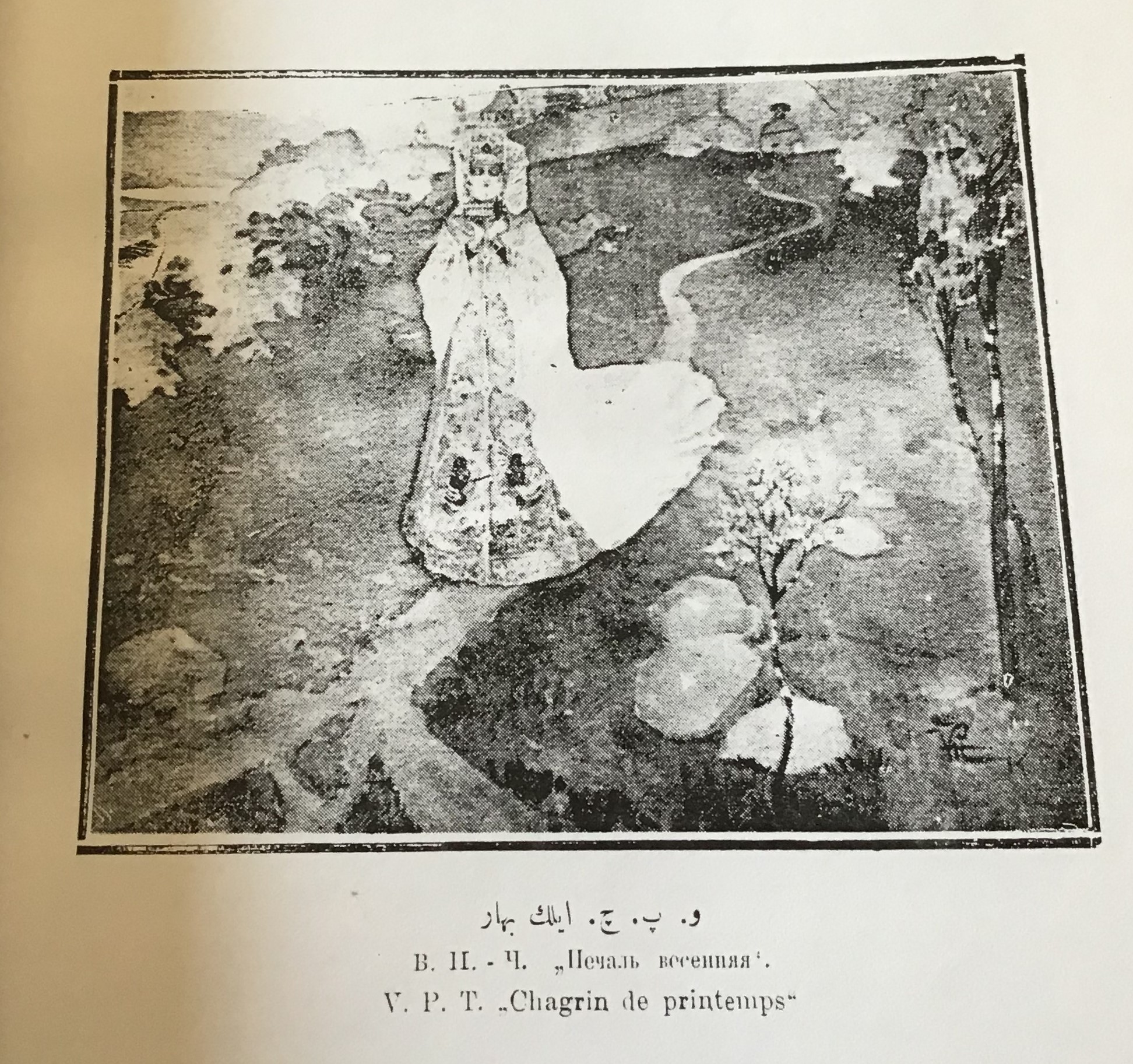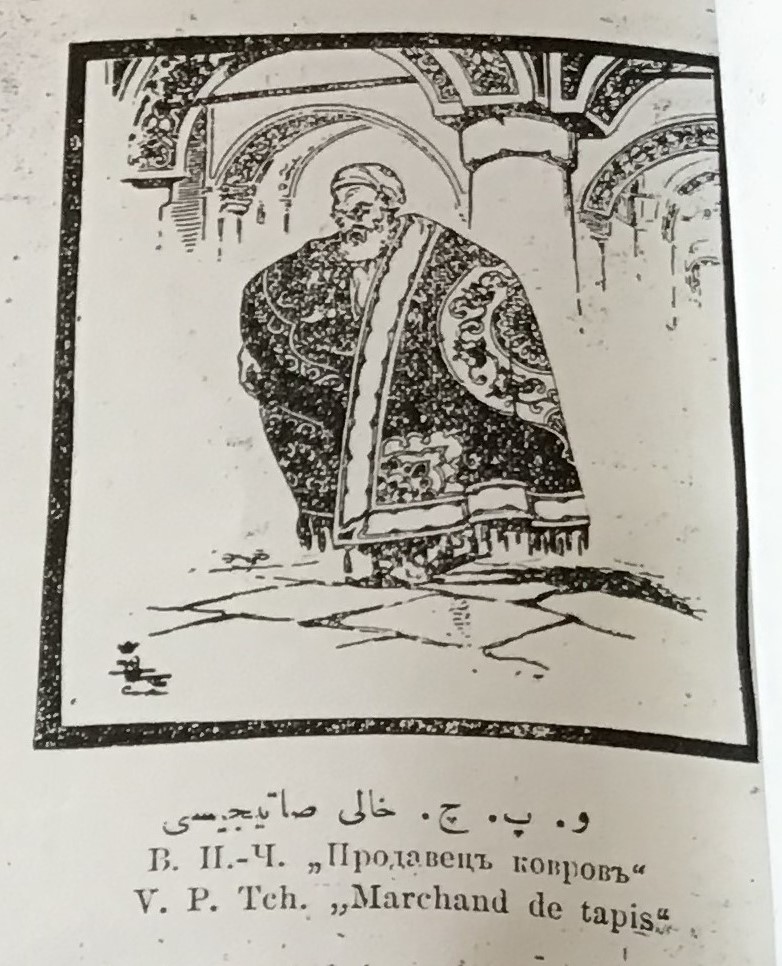Archive
V.P.-Tch.
- V.P.-Tch.
В.П.-Ч., В. П. Ч., Виктор Викторович Прокопович-Чарторыйский, V. P. T., V. P. Tch., Viktor Prokopovich-Czartoryski, Viktor Prokopovich-Tchartoryski
- 1896
- PainterScene DesignerMuralist
Painter V.P.-Tch. is perhaps the most mysterious figure of all Russian-speaking émigré painters who lived in Constantinople in the 1920s. Until now, almost all sources indicated only his initials.
Word Count: 31

V.P.-Tch. (Les Russes sur le Bosphore Almanac, 1928, n.p.). 
V.P.-Tch. (Les Russes sur le Bosphore Almanac, 1928, n.p.). 
Chagrin de printemps, by V.P.-Tch. (Les Russes sur le Bosphore Almanac, 1928, n.p.). 
Marchand de tapis, by V.P.-Tch. (Les Russes sur le Bosphore Almanac, 1928, n.p.). Anonymous. “Blanc et Noir.” Zarubejniy Klich, 1925, p. 10.
Bournakine, Anatoliy, editor. Russkiye na Bosfore. Les Russes sur le Bosphore. Imp. L. Babok & fils, 1928.
Knorrin, L. “Na Puti Sblijeniya Turetskogo i Russkogo Iskusstv.” Presse du Soir, 24 April 1926, n.p.
Ted’. “K Vystavke Hudojnikov.” Presse du Soir, 29 June 1923, n.p.
Volkov, S.V. “Uchastniki Belogo Dvijeniya v Rossii.” погибшие.рф, https://xn--90adhkb6ag0f.xn--p1ai/arhiv/uchastniki-grazhdanskoj-vojny/uchastniki-belogo-dvizheniya-v-rossii/uchastniki-belogo-dvizheniya-v-rossii-pr-pya.html. Accessed 9 May 2020.
Word Count: 70
My deepest thanks go to Neslihan Yalav (Istanbul Çelik Gülersoy Library).
Word Count: 12
Istanbul, Ottoman Empire/Turkey (1920–?); France (most likely).
Küçük Yazıcı 4 (now presumably Tarlabaşı Blv. 79), Hüseyinağa, Beyoğlu, Istanbul (studio); Rose Noire Café-Cabaret, Grand Rue de Pera 146 (now Circle d’Orient, İstiklal Caddesi 56/58), Beyoğlu, Istanbul (place of work).
- Istanbul
- Ekaterina Aygün. "V.P.-Tch.." METROMOD Archive, 2021, https://archive.metromod.net/viewer.p/69/2949/object/5138-10440359, last modified: 14-09-2021.
-
Les Russes sur le BosphoreAlmanacIstanbul
The almanac Les Russes sur le Bosphore is a joint work of Russian-speaking émigrés in Istanbul who were faced with the challenge of leaving the country or becoming naturalised.
Word Count: 30
Konstantinopol’skiy Kommercheskiy KlubClubIstanbulKKK was probably the most popular Russian club in Beyoğlu district between 1924 and 1926. Not only Russian émigrés but also local residents could enjoy its constantly updated entertainment programme.
Word Count: 30
Union of Russian Painters in ConstantinopleAssociationIstanbulThe Union existed for less than two years but in that short space of time a tremendous amount of work was done by its members, refugees from the Russian Empire.
Word Count: 30